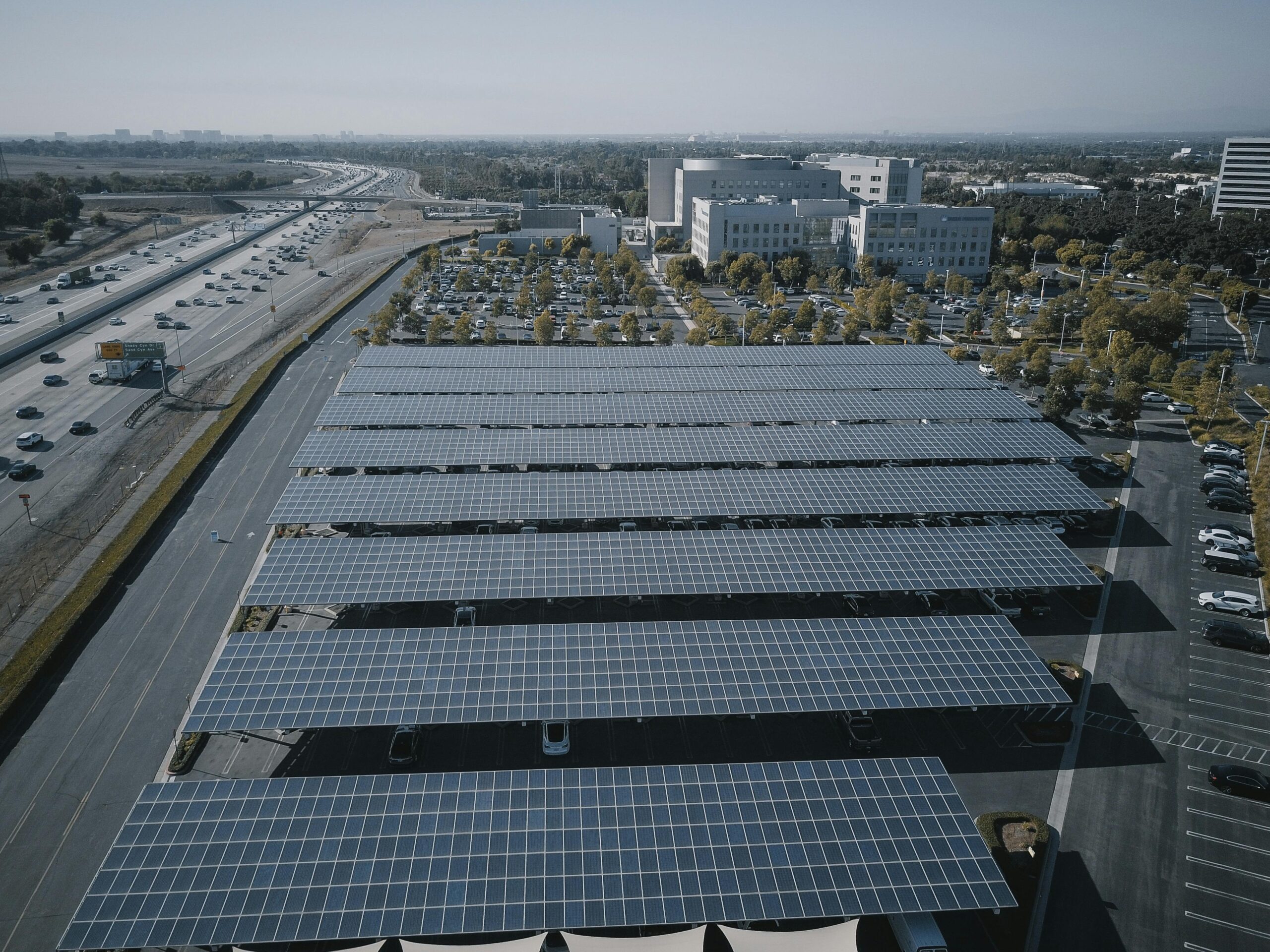The freight industry stands at a crossroads where sustainability meets profitability, demanding urgent transformation toward decarbonized operations and environmentally responsible logistics.
🌍 Understanding the Carbon Footprint of Modern Freight
Global freight transportation accounts for approximately 8% of worldwide carbon emissions, a staggering figure that continues to rise with increasing consumer demand and e-commerce expansion. The supply chain’s environmental impact extends far beyond simple transportation, encompassing warehousing, packaging, last-mile delivery, and reverse logistics operations.
Traditional freight networks rely heavily on fossil fuels, with diesel-powered trucks, cargo ships burning heavy fuel oil, and air freight generating significant greenhouse gas emissions. The complexity of modern supply chains means goods often travel thousands of miles through multiple transportation modes before reaching end consumers, multiplying their carbon footprint at each transfer point.
Understanding this environmental impact has become crucial for businesses facing increasing regulatory pressure, consumer expectations, and investor scrutiny. Companies that fail to address their supply chain emissions risk reputational damage, regulatory penalties, and competitive disadvantage in an increasingly sustainability-conscious marketplace.
⚡ Electric and Alternative Fuel Vehicles Transform Ground Transportation
The electrification of freight vehicles represents one of the most promising pathways toward decarbonization. Major logistics companies and vehicle manufacturers are investing billions in electric truck development, with several models already operational in urban delivery environments.
Battery-electric trucks offer zero tailpipe emissions and significantly reduced operating costs compared to diesel alternatives. While range limitations currently restrict their use to short and medium-haul routes, rapid advances in battery technology are extending viable distances. Companies like Tesla, Rivian, and traditional manufacturers like Volvo and Daimler have introduced electric commercial vehicles with ranges exceeding 300 miles on single charges.
Hydrogen fuel cell vehicles present another compelling alternative, particularly for long-haul routes where battery weight and charging time pose challenges. Hydrogen trucks can refuel quickly and offer ranges comparable to diesel vehicles while emitting only water vapor. Several pilot programs in Europe and North America are testing hydrogen-powered trucks in real-world freight operations.
Renewable Natural Gas and Biofuels Bridge the Transition
While full electrification remains years away for many freight applications, renewable natural gas (RNG) and advanced biofuels provide immediate emission reduction opportunities. RNG, produced from agricultural waste, landfills, and wastewater treatment, can reduce greenhouse gas emissions by up to 80% compared to conventional diesel when used in compatible engines.
Biodiesel and renewable diesel offer drop-in solutions compatible with existing diesel engines, requiring no vehicle modifications while delivering substantial carbon reductions. Several major logistics providers have already integrated these fuels into their operations, achieving measurable sustainability improvements without waiting for complete fleet replacement.
🚢 Maritime Shipping Charts a Cleaner Course
Ocean freight, responsible for moving approximately 90% of global trade, faces unique decarbonization challenges due to vessel size, operational requirements, and infrastructure limitations. The International Maritime Organization has set ambitious targets to reduce shipping emissions by at least 50% by 2050 compared to 2008 levels.
Several technological and operational strategies are converging to transform maritime freight sustainability. Slow steaming, where vessels operate at reduced speeds, can decrease fuel consumption and emissions by 20-30% while requiring no technological upgrades. This approach has gained traction despite extending transit times, as companies balance speed against environmental responsibility.
Alternative marine fuels including liquefied natural gas (LNG), methanol, ammonia, and hydrogen are being tested and deployed across various vessel types. LNG-powered ships can reduce carbon emissions by approximately 20% and eliminate sulfur oxide emissions entirely. More advanced fuels like green ammonia and hydrogen promise near-zero emissions but require significant infrastructure development and safety protocol establishment.
Wind-Assisted Propulsion Makes a Modern Comeback
Innovative technologies are bringing wind power back to commercial shipping through modern interpretations. Rotor sails, rigid sails, and kite systems can reduce fuel consumption by 10-30% depending on routes and weather conditions. Several shipping companies have retrofitted vessels with these systems, demonstrating both environmental and economic benefits.
✈️ Aviation Freight Seeks Sustainable Altitude
Air freight presents the most challenging decarbonization scenario due to aviation’s inherent energy intensity and limited alternative fuel options. Despite representing only a small percentage of freight volume, air cargo generates disproportionate carbon emissions due to fuel requirements and operational characteristics.
Sustainable aviation fuels (SAF) manufactured from renewable feedstocks can reduce lifecycle emissions by up to 80% compared to conventional jet fuel. These fuels are compatible with existing aircraft and infrastructure, making them the most immediately viable decarbonization pathway. However, limited production capacity and high costs currently restrict widespread adoption.
Electric and hybrid-electric aircraft development continues, with several promising prototypes designed for cargo applications. While current battery technology limits electric aircraft to short-range, small payload operations, ongoing research may expand capabilities over coming decades.
📦 Optimizing Logistics Networks Through Technology
Digital transformation enables significant emission reductions through improved efficiency, route optimization, and load consolidation. Advanced algorithms analyze countless variables including traffic patterns, weather conditions, delivery windows, and vehicle capacity to minimize empty miles and optimize fuel consumption.
Artificial intelligence and machine learning systems continuously improve logistics decision-making by learning from historical data and predicting future patterns. These technologies can reduce total vehicle miles traveled by 10-25% while maintaining or improving delivery performance.
Real-Time Visibility Drives Efficiency Improvements
Supply chain visibility platforms provide unprecedented transparency into freight movements, enabling proactive decision-making and waste reduction. Companies can identify inefficiencies, consolidate shipments, and optimize inventory placement to minimize transportation requirements.
Internet of Things (IoT) sensors monitor shipment conditions, vehicle performance, and environmental factors in real-time, generating data that informs both immediate operational decisions and long-term strategic planning. This connectivity transforms supply chains from reactive to predictive systems.
🏭 Warehouse and Facility Decarbonization
Distribution centers and warehouses represent significant emission sources through energy consumption, material handling equipment, and heating/cooling requirements. Comprehensive facility decarbonization encompasses multiple strategies from renewable energy adoption to equipment electrification.
Solar panel installations on warehouse roofs can generate substantial clean energy, with many facilities achieving net-zero electricity consumption. Battery storage systems enable facilities to store excess solar generation for evening operations and provide grid services that improve renewable energy economics.
Electrification of material handling equipment including forklifts, pallet jacks, and yard trucks eliminates on-site emissions while reducing maintenance costs and improving air quality for workers. Modern electric equipment matches or exceeds the performance of internal combustion alternatives across most applications.
Building Design and Automation Enhance Efficiency
Energy-efficient building design incorporating natural lighting, advanced insulation, and smart climate control systems dramatically reduces operational energy requirements. Automated warehouse systems optimize space utilization and reduce the facility footprint needed for given storage capacity, lowering overall resource consumption.
🤝 Collaborative Freight Networks Multiply Impact
Industry collaboration enables emission reductions impossible for individual companies to achieve independently. Shared freight networks allow competitors to consolidate shipments, maximize vehicle utilization, and reduce redundant transportation.
Digital freight matching platforms connect shippers with available capacity, reducing empty backhaul miles that waste fuel and generate unnecessary emissions. These marketplaces create more efficient freight networks by treating transportation capacity as a shared resource rather than company-specific assets.
Collaborative warehousing arrangements allow multiple companies to share distribution facilities, reducing the total number of buildings required and enabling more efficient inventory positioning. This approach particularly benefits smaller companies that lack the volume to justify dedicated facilities.
📊 Measuring and Reporting Supply Chain Emissions
Accurate carbon accounting has become essential for meaningful decarbonization efforts. Standardized methodologies like the Greenhouse Gas Protocol provide frameworks for measuring Scope 3 emissions associated with supply chain activities.
| Emission Scope | Definition | Supply Chain Relevance |
|---|---|---|
| Scope 1 | Direct emissions from owned sources | Company-operated vehicles and facilities |
| Scope 2 | Indirect emissions from purchased energy | Electricity used in warehouses and offices |
| Scope 3 | All other indirect emissions | Contracted transportation and supplier emissions |
Advanced carbon accounting platforms integrate data from transportation management systems, energy bills, and supplier disclosures to calculate comprehensive supply chain footprints. This visibility enables companies to identify emission hotspots and prioritize reduction initiatives for maximum impact.
💡 Circular Economy Principles Reduce Transportation Needs
Redesigning supply chains around circular economy principles can dramatically reduce transportation requirements and associated emissions. Product-as-a-service models, refurbishment programs, and closed-loop material flows minimize the need to constantly ship new products to consumers.
Local and regional sourcing strategies reduce transportation distances while supporting resilient supply chains less vulnerable to global disruptions. Companies are increasingly balancing cost optimization against sustainability and risk considerations, sometimes choosing nearby suppliers despite higher unit costs.
Packaging optimization reduces shipment volume and weight, allowing more products per vehicle and fewer total trips. Innovative packaging designs using recycled materials and right-sized dimensions deliver environmental benefits while often reducing costs through improved logistics efficiency.
🎯 Policy and Regulation Drive Transformation
Government policies play crucial roles in accelerating freight decarbonization through regulations, incentives, and infrastructure investment. Emissions standards for vehicles, carbon pricing mechanisms, and low-emission zones in urban areas create compliance imperatives that drive technology adoption.
Financial incentives including tax credits, grants, and accelerated depreciation reduce the economic barriers to clean technology investment. Many jurisdictions offer substantial support for electric vehicle purchases, charging infrastructure installation, and renewable energy adoption.
Public infrastructure investment in charging networks, hydrogen fueling stations, and alternative fuel production facilities addresses the chicken-and-egg problem that otherwise slows technology adoption. Strategic government spending can catalyze private investment by reducing risk and demonstrating commitment to energy transition.
💰 The Business Case for Decarbonized Freight
While environmental responsibility drives initial interest in supply chain decarbonization, compelling economic benefits increasingly justify investment. Fuel cost reductions, operational efficiency improvements, and risk mitigation deliver tangible financial returns alongside sustainability achievements.
Electric vehicles offer significantly lower operating costs than diesel alternatives despite higher upfront purchase prices. Electricity costs less than diesel per mile traveled, and electric powertrains require substantially less maintenance due to fewer moving parts and no oil changes.
Enhanced brand reputation and customer loyalty represent valuable intangible benefits of supply chain sustainability leadership. Consumers increasingly consider environmental factors in purchasing decisions, with surveys consistently showing willingness to pay premiums for sustainably delivered products.
Investor Pressure Elevates Sustainability Priorities
Environmental, social, and governance (ESG) criteria have become central to investment decisions, with major institutional investors demanding transparency and action on climate issues. Companies with robust decarbonization strategies access lower-cost capital and attract long-term investors focused on sustainable value creation.
🚀 Innovation Frontiers in Freight Decarbonization
Emerging technologies promise to accelerate supply chain transformation beyond current capabilities. Autonomous vehicles could optimize routing and driving patterns for maximum efficiency while enabling 24/7 operations that improve asset utilization.
Drone delivery for small packages and urban logistics applications reduces ground vehicle requirements while offering rapid, emissions-free delivery for appropriate use cases. Regulatory frameworks continue evolving to enable broader autonomous aerial vehicle deployment.
Blockchain technology enables transparent, verifiable supply chain tracking that can authenticate sustainability claims and combat greenwashing. Distributed ledger systems create immutable records of product journeys and associated emissions, building trust with consumers and regulators.

🌟 Leading the Transition to Sustainable Freight Networks
The transformation toward decarbonized supply chains represents both challenge and opportunity for businesses across industries. Companies that proactively embrace this transition position themselves as leaders in an inevitably sustainable future economy.
Successful decarbonization requires comprehensive strategies addressing all supply chain elements from procurement through delivery. No single solution delivers complete sustainability; rather, combinations of technological upgrades, operational improvements, and strategic redesign create meaningful impact.
Stakeholder engagement across suppliers, customers, employees, and communities builds the collaborative ecosystems necessary for systemic change. Transparency about progress, setbacks, and learnings accelerates collective advancement while building credibility and trust.
The journey toward truly sustainable freight networks has only begun, but the direction is clear and momentum is building. Organizations investing now in decarbonization capabilities will lead their industries into a cleaner, more efficient, and ultimately more profitable future.
As technology costs decline, regulations tighten, and consumer expectations intensify, the competitive advantages of sustainable supply chains will only grow. The question is no longer whether to decarbonize freight networks, but how quickly companies can execute transformation while maintaining operational excellence and customer satisfaction throughout the transition.
Toni Santos is an urban innovation writer and researcher dedicated to exploring how technology, sustainability, and design are reshaping the cities of tomorrow. With a deep interest in smart infrastructure and human-centered development, Toni studies how data-driven systems and green technologies can create more livable, resilient, and efficient urban environments. Fascinated by sustainable architecture, IoT integration, and next-generation mobility, Toni’s work connects environmental awareness with digital transformation. Through research and storytelling, he examines how intelligent planning and renewable innovation can redefine the relationship between people and their cities. Blending urban design, environmental science, and systems thinking, Toni documents the breakthroughs that are reimagining how we build, move, and coexist. His work highlights the architects, engineers, and technologists leading the charge toward smarter, greener futures. His work is a tribute to: Green architecture as the foundation for sustainable living IoT innovation shaping the infrastructure of connected cities Mobility systems and renewable energy driving urban transformation Whether you’re an architect, engineer, or city planner, Toni Santos invites you to explore the technologies and ideas building the smart, sustainable cities of the future — one street, one system, one vision at a time.




